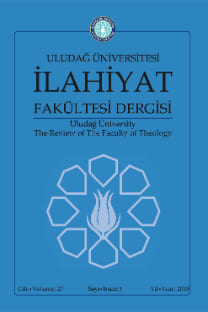İmâm-ı Rabbânî’nin Vahdet-i Vücûd Eleştirisi ve Tarihsel Arkaplanı
Ahmed Sirhindî, İbnü’l-Arabî, vahdet-i vücûd, vahdet-i şuhûd
İmâm-ı Rabbânî’nin Vahdet-i Vücûd Eleştirisi ve Tarihsel Arkaplanı
-,
- ISSN: 1301-3394
- Yayın Aralığı: 2
- Yayıncı: -
Arap Edebiyâtı Bağlamında Edebiyât Kavramına Analitik Bir Bakış
Fusûsu’l-Hikem’e Yönelik Bazı Tartışmalı Konulara Sofyalı Bâlî Efendi’nin Bakışı
Rifâ’a Râfi’î et-Tahtâvî ve Modern Arap Edebiyat Dilinin Leksikolojik Gelişimine Katkısı
Anne Baba Örnek Davranışlarının Çocukların ve Ergenlerin Dinî Kişiliğinin Oluşumuna Etkileri
İmâm-ı Rabbânî’nin Vahdet-i Vücûd Eleştirisi ve Tarihsel Arkaplanı
Fethinden XIX Yüzyılın Sonlarına Kadar Bursa’da Ermeniler
73 Fırka Hadisinin Mezhepler Tarihi Kaynaklarında Fırkaların Tasnifine Etkisi
[Hz.] Muhammed’in Hayatına Dair Arapça Yazılmış Modern Biyografiler
